Next year will mark 50 years since 1968, one of the most momentous years in the second half of the twentieth century. The assassinations of Martin Luther King and Robert Kennedy, civil rights unrest, the Prague Spring, Paris riots, the flourishing of the youth counterculture, all occurred in a dramatic twelve months.
There’ll be a lot of reflection on 1968 across 2018.
One of the most important events of 1968 occurred here in Vietnam - the Tet Offensive. It was a carefully coordinated uprising by Viet Cong guerrillas, combined with a North Vietnamese military assault, against US backed South Vietnamese forces. On January 30, the Tet lunar New Year, unprecedented violence erupted across the cities and towns of southern Vietnam.
The former US Embassy in Saigon (now the US Consulate) was briefly seized by guerillas. There were attacks across the city. National police chief Nguyen Ngoc Loan was photographed by Eddie Adams, summarily executing NLF Captain Bay Lop on the streets of Cholon. Adams’ photograph remains one of a handful that was instrumental in turning public opinion against the war.
The Tet attacks were intended to turn popular sentiment against the US backed South Vietnamese government and cause a general uprising. That uprising never materialised. But the offensive marked a turning point in US sentiment. The offensive was more successful in mobilising US sentiment against the war than it was in sparking a general uprising against the South Vietnamese government. The war dragged on for 7 more years.
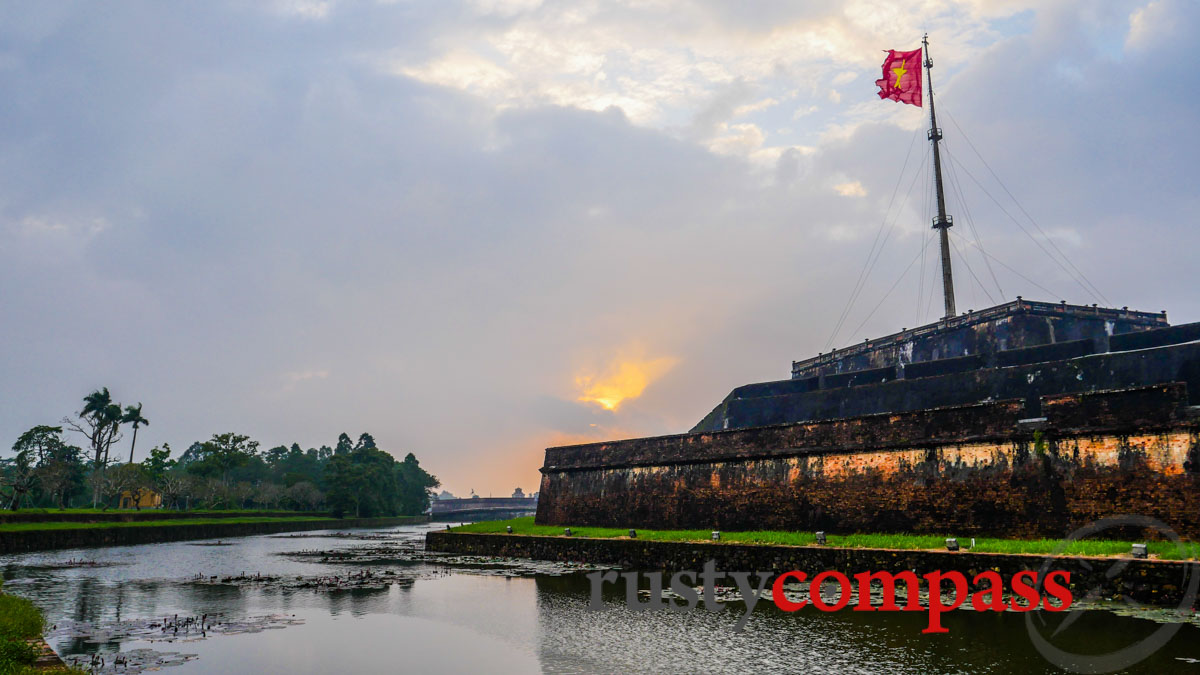
Photo: Mark Bowyer Hue Citadel - In 1968, the Viet Cong flag flew from here for 26 days.
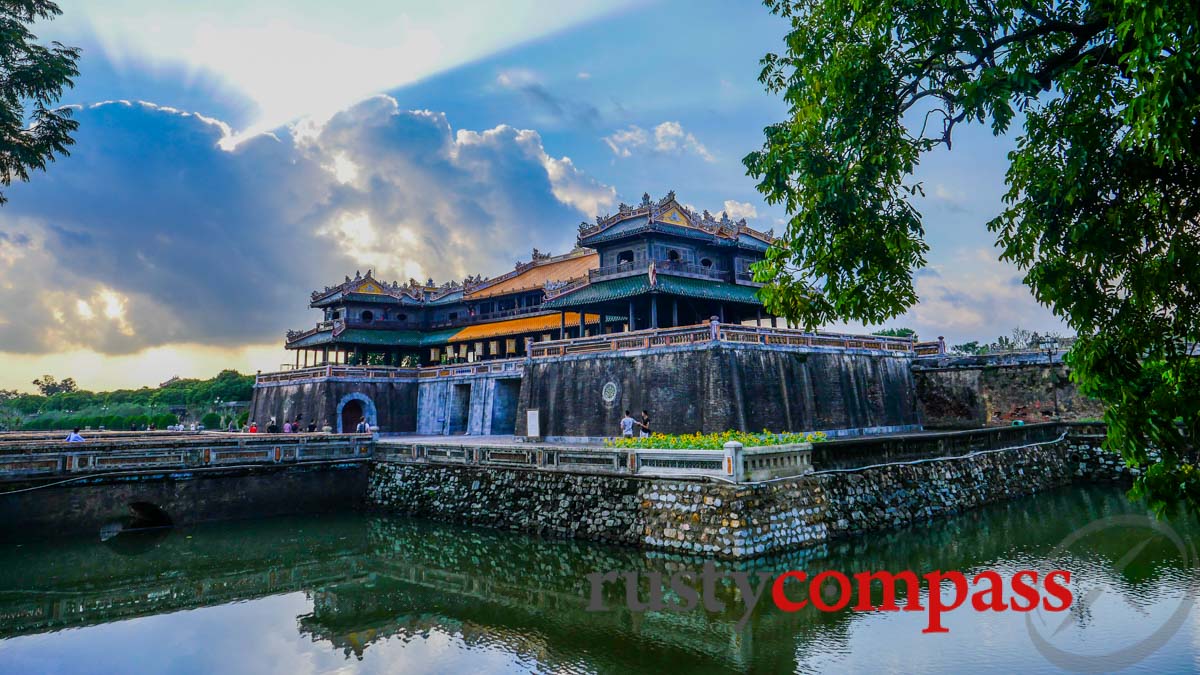
Photo: Mark Bowyer Hue Citadel - Ngo Mon Gate
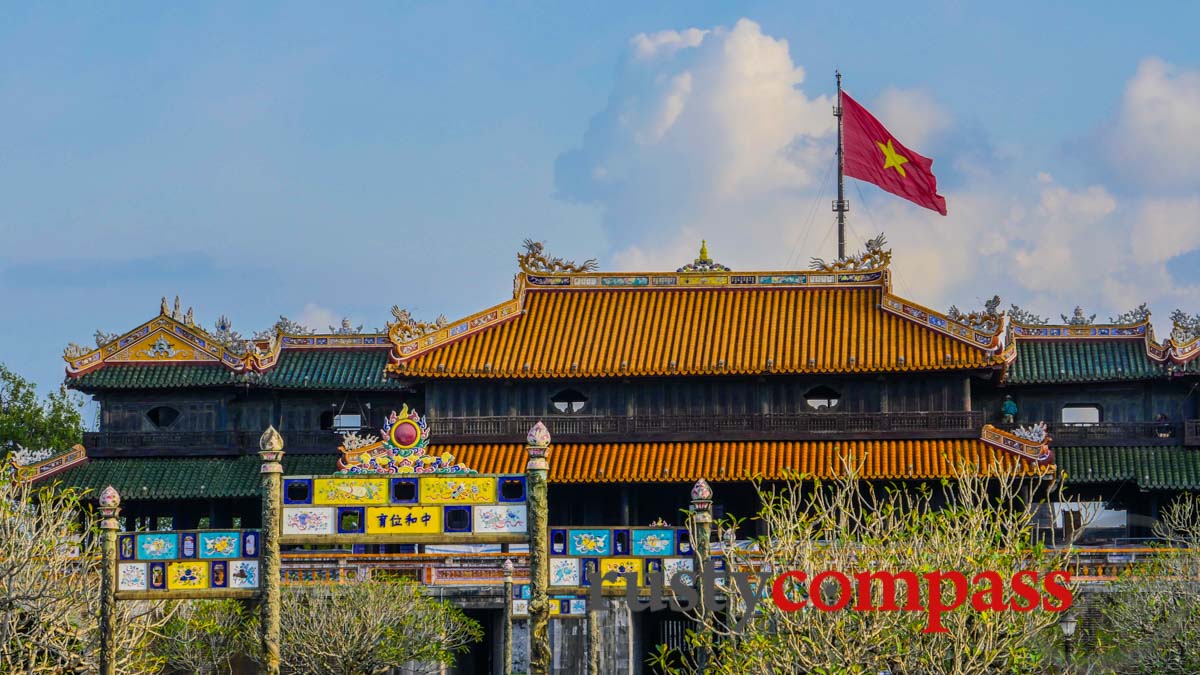
Photo: Mark Bowyer Hue Citadel and the flag tower
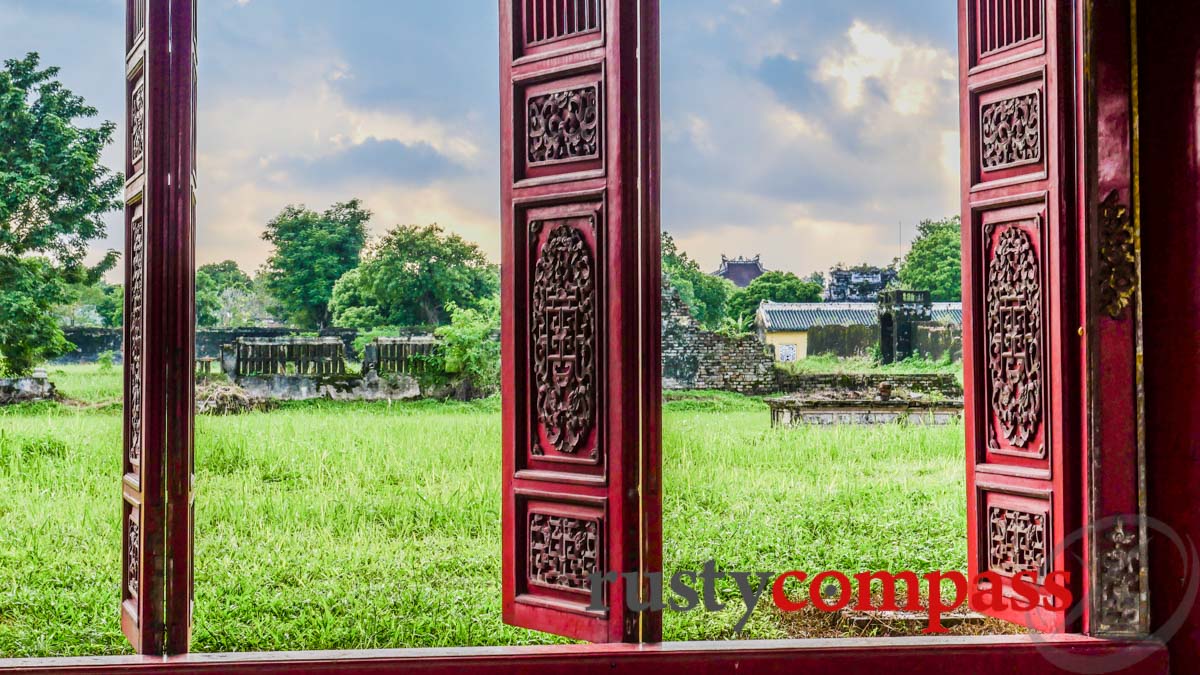
Photo: Mark Bowyer Hue Citadel - The ruins have more meaning than the new pavilions.
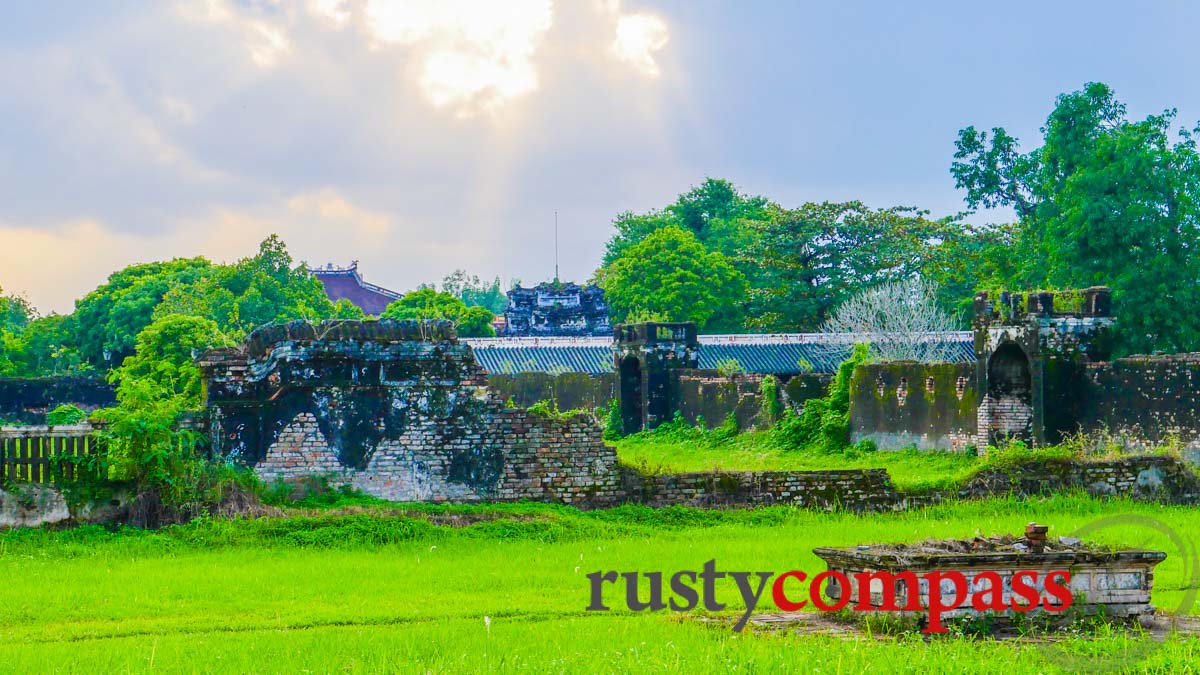
Photo: Mark Bowyer The real story of Hue Citadel
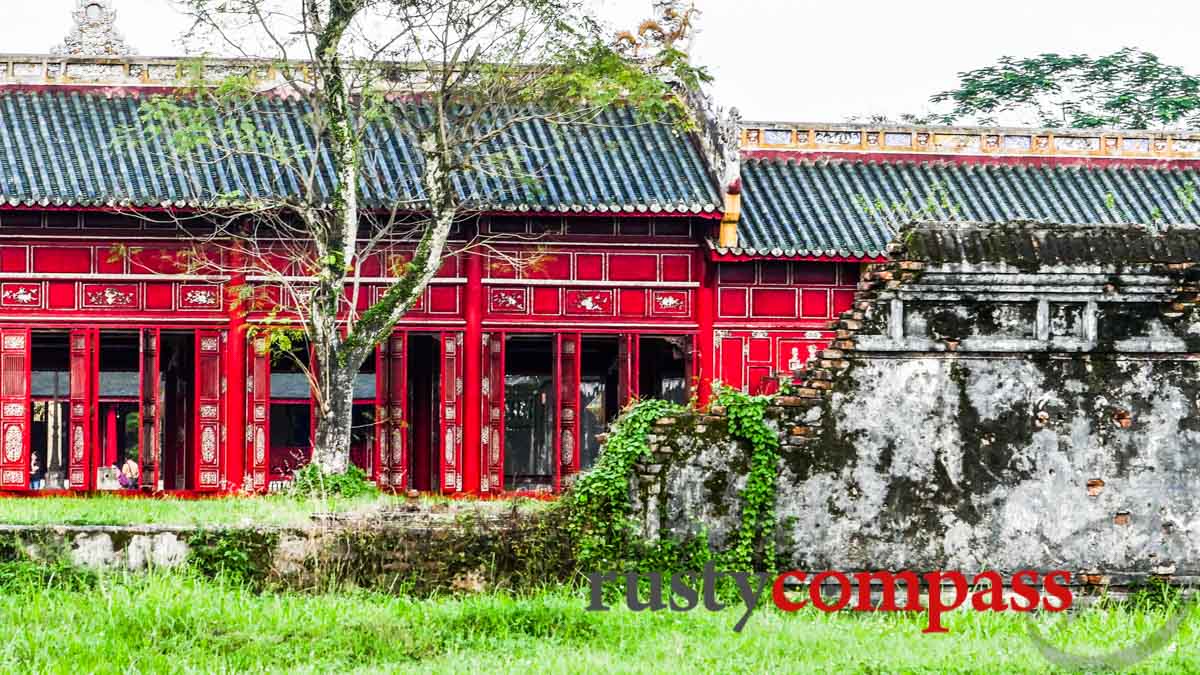
Photo: Mark Bowyer Broken walls and a new pavilion - Hue Citadel
No battle was more important in the Tet Offensive campaign than the Battle of Hue.
Hue, the royal capital of Vietnam until 1945 and the northernmost city of what was South Vietnam, was held by the North Vietnamese Army (NVA) and National Liberation Front (NLF) for 26 days before South Vietnamese and US forces retook it. The Viet Cong (NLF) flag flew over the citadel symbolising an unprecedented assault on a South Vietnamese city.
Hue was the only city to be captured and held during Tet 1968. Its key role in Vietnamese history and its strategic value made the capture symbolically and militarily significant.
Communist forces were ultimately defeated after devastating door to door fighting that destroyed the city and much of the citadel.
452 South Vietnamese and 216 US soldiers died retaking Hue in 1968. Estimates of North Vietnamese casualties vary widely from around 2400 to more than 8000. Thousands of civilians also died.
7 years later in March 1975, Hue fell into communist hands again. This time there was no US response and communist forces took Saigon a month later. The Vietnam War was finally over.
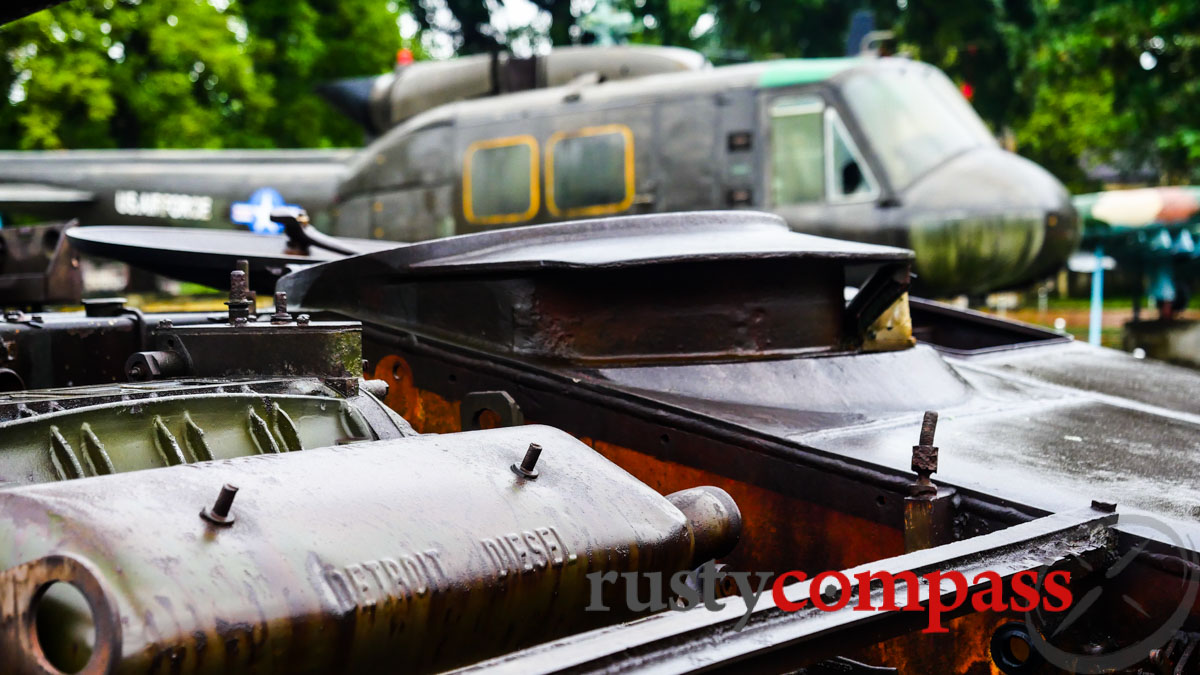
Photo: Mark Bowyer Detroit Diesel - US military junk at Hue's History Museum
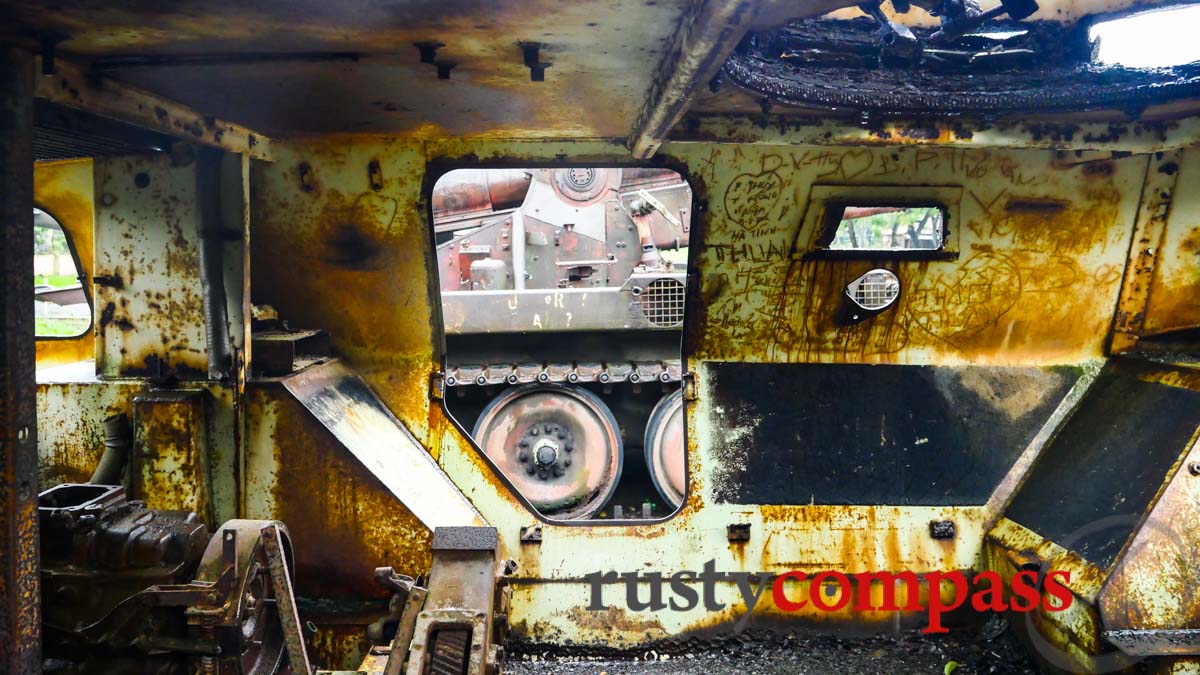
Photo: Mark Bowyer US military junk - Hue History Museum
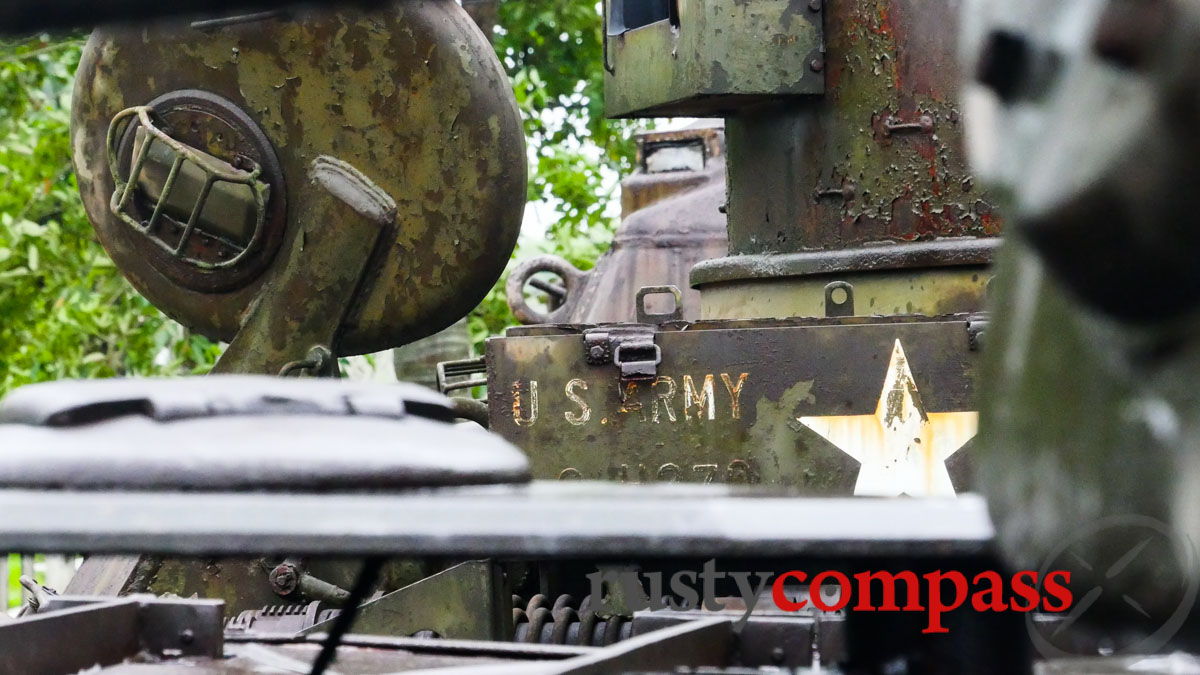
Photo: Mark Bowyer US military junk - Hue History Museum

Photo: Mark Bowyer US military junk - Hue History Museum
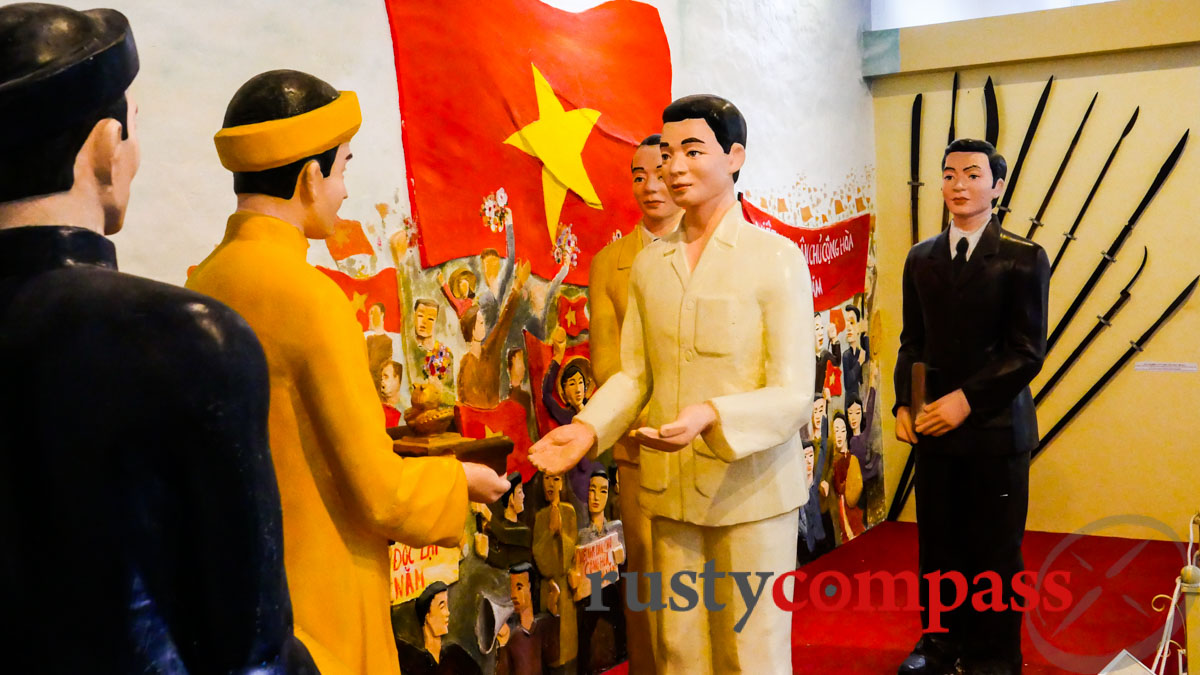
Photo: Mark Bowyer Bao Dai abdicates - one of the many historical events that took place in Hue.
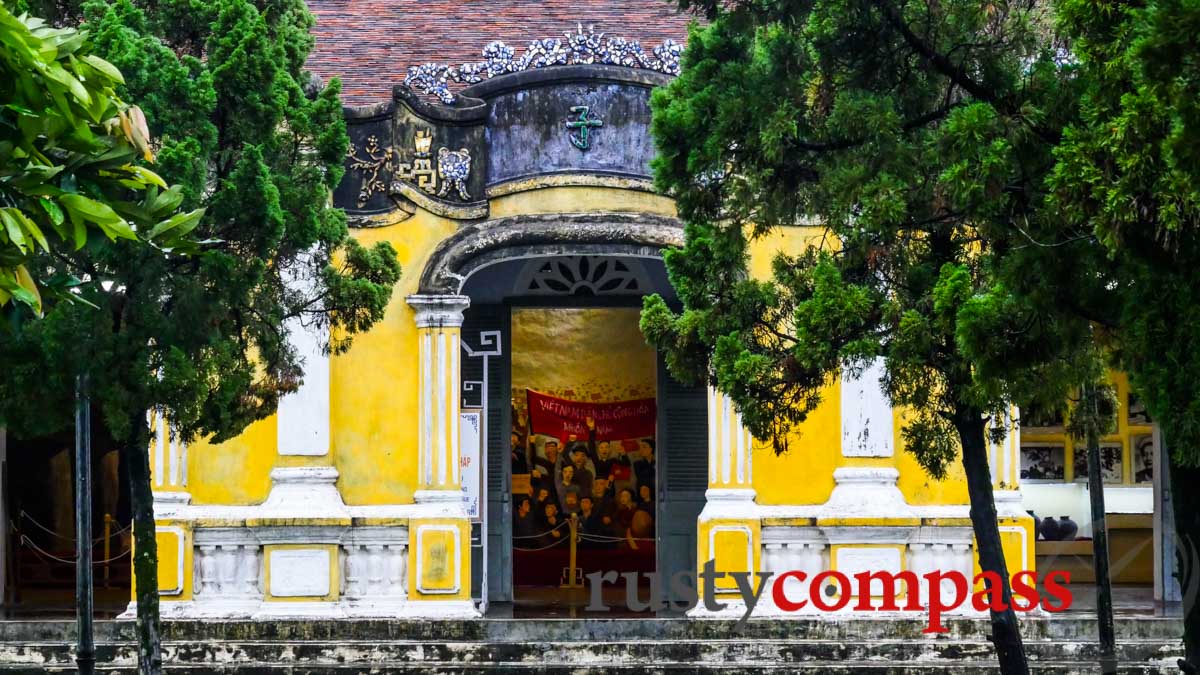
Photo: Mark Bowyer Beautiful Nguyen Dynasty era grounds - Hue History Museum
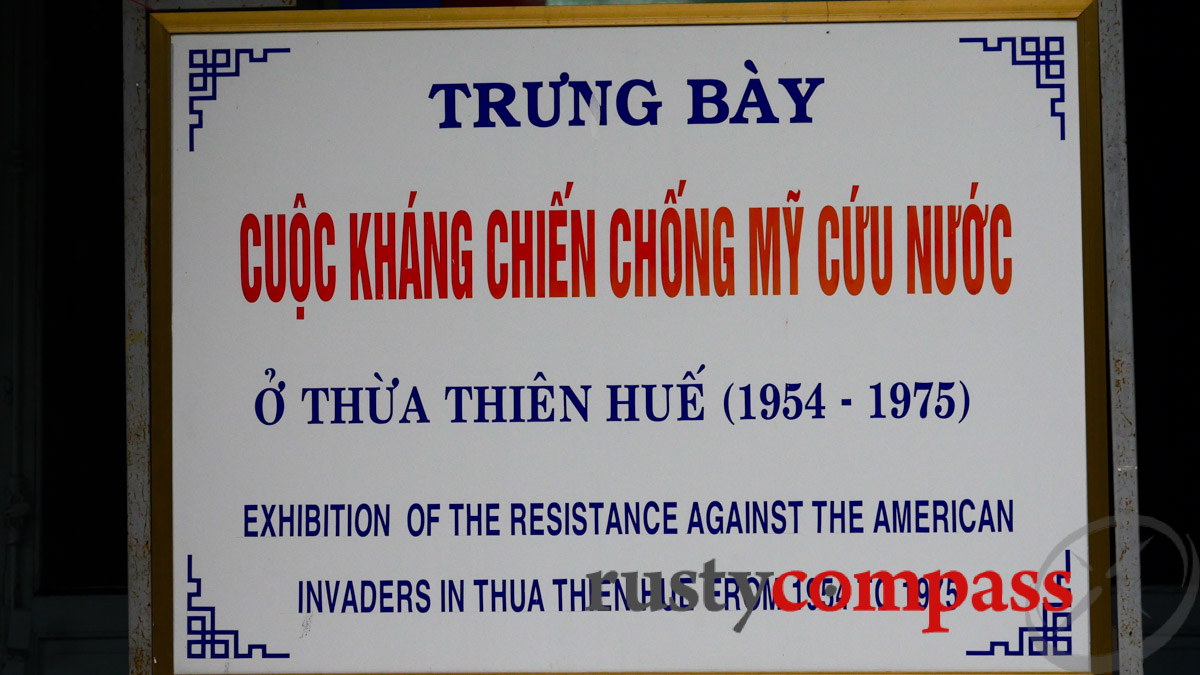
Photo: Mark Bowyer Hue History Museum
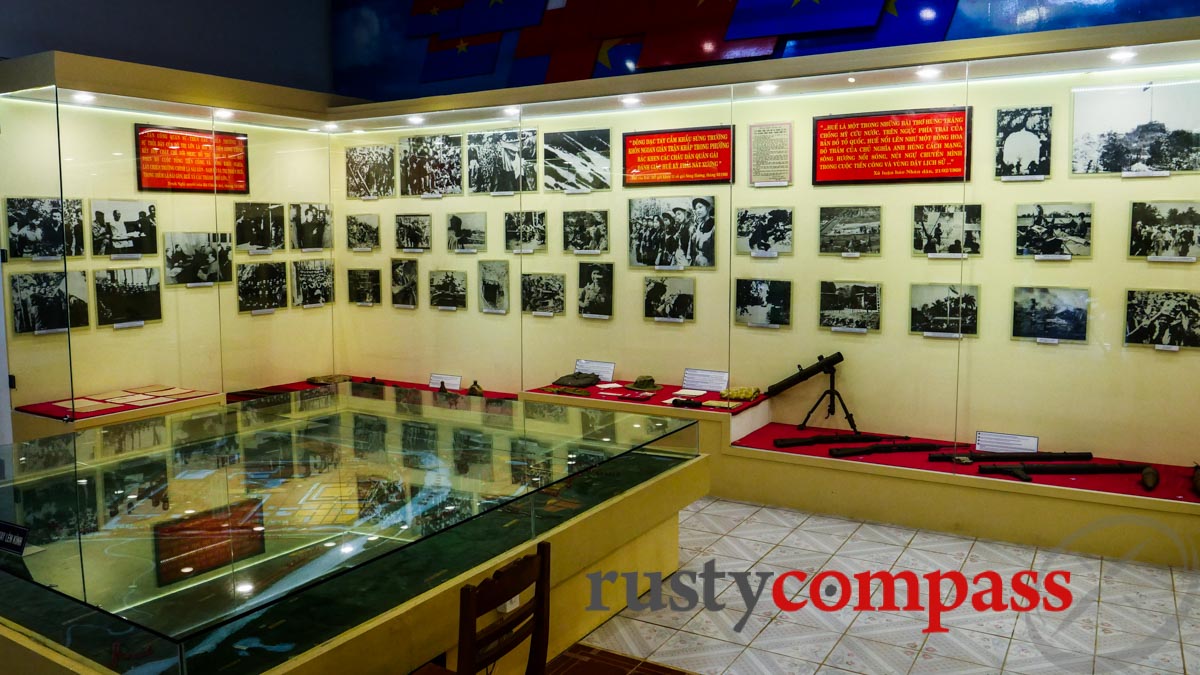
Photo: Mark Bowyer The Tet Offensive gets a few images here - Hue History Museum
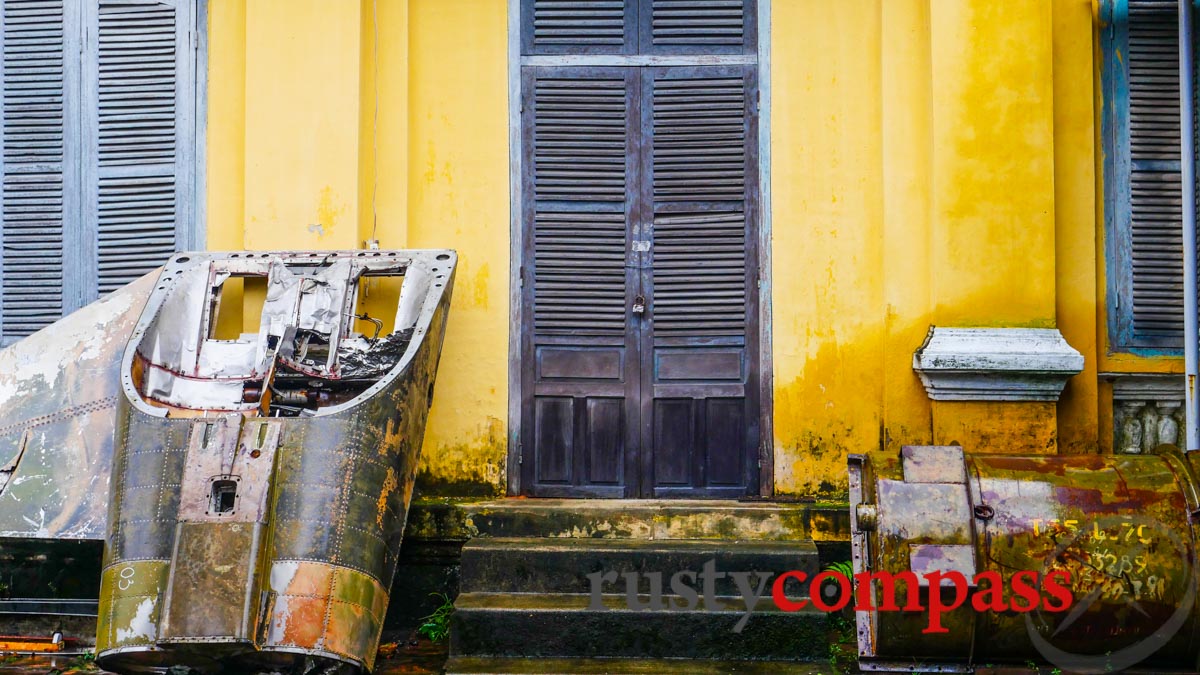
Photo: Mark Bowyer Military junk strewn around the grounds of Hue History Museum
Next year will see a big surge of interest in the Tet Offensive, and the Battle of Hue. Interest is already building. Bestselling US author Mark Bowden, recently published an extensive account of the battle - Hue 1968: A Turning Point of the American War in Vietnam.
I went back to Hue last month to see what travellers interested in this important piece of history might discover.
The simple answer is, very little.
Visitors to the Hue Citadel, the focus of so much of the fighting and devastation, will find physical signs of the battle everywhere. But there are only the most superficial references to it. The citadel complex remains a ruin. But there is no effort to explain to visitors what happened here.
Nearby in the outer area of the citadel, the Hue Military History Museum does little better. There’s a large collection of US military equipment in the grounds that sits without explanation.
The museum is housed in a handsome Nguyen Dynasty complex and has a few photos dedicated to the Tet battle but no information.
It’s as if one of the twentieth century’s most significant battles never occurred at all.
I’ve long been fascinated and disappointed by Vietnam’s failure to provide a meaningful experience of history to its visitors. It’s a failure that extends well beyond the Vietnam War. A country with an incredible story from ancient times, shows a remarkable reluctance to share it.
It seems like the country’s tourism officials have no awareness that historical tourism is an important part of a country’s culture and soft power - and it has the potential to be a huge revenue earner as well. They're more interested in building cable cars, casinos and mega-resorts in pristine landscapes.
Some of Vietnam’s most popular tourist destinations offer an historical experience of dismally low quality. The Cu Chi tunnels’ Disneyesque take on the Vietnam War shows little respect for the horrors endured by all sides on that battleground. Ho Chi Minh City’s War Remnants Museum is high on shock value but offers little by way of substance and history.
Hue is where Vietnam’s failures as a historical tourism destination are most stark. Some of the country’s most important events over three centuries occurred in this city. But visitors come and go baffled by what it was all about. They’re served up primary school standard history if they get any at all.
The city’s stories remain untold and its massive contribution to Vietnamese music, literature, art and spiritual life are largely left unmentioned.
It feels like Hue’s modern day fathers have no idea what to do with their city’s rich past.
There’s been no improvement in the quality of information provided to visitors to the citadel and the imperial tombs in the 26 years I’ve been visiting - though prices have risen significantly. The city's architectural treasures are under threat.
Despite its historical blind spots and missed opportunities, I love Hue. It may be silent in terms of historical narrative. But there’s an atmosphere to the place that can’t be silenced. You can feel the history, the drama and the tragedy.
I still love walking around the citadel in the late afternoon when there are few visitors. And I still love exploring the tombs and countryside. Even better on miserable damp, cold days.
The stories of the Nguyen Dynasty, French colonialism, the Ngo family, Buddhism, Catholicism, the Vietnam War and the Tet Offensive all played out in Hue. But Hue has very little to say about them. These are incredible stories. And it’s 72 years since the abdication of Bao Dai, the last king, 50 years since the Tet Offensive, and 42 years since the city fell to communist forces in 1975. It might be time to try and tell them - while some of the players are still alive.





1 comment so far
No mention of the massacres at Hue. I have to wonder if that is why the local officials are so circumspect. Also, you might mention it as the home of the Nguyen Lords (Nguyen Phuc) prior to the Tay Son rebellion, when Vietnam was split between the Nguyen ad Trinh clans as Dang Ngoai (the North) and Dang Trong (the South). The Chinese recognized the two Vietnamese states as sovereign in their territories in the 1740s. Hue was also an important milestone in Gia Long's wars to defeat the Tay Son and reunite the country.